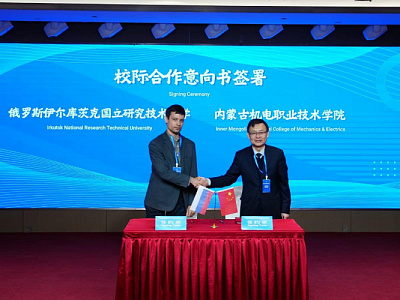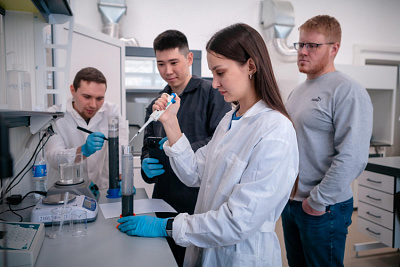A new drone-type unmanned system for complex geophysical survey was tested by employees of the INRTU Siberian School of Geosciences
Successful tests of a new drone-type system for complex geophysical surveying by magnetic surveying and gamma radiometry methods were conducted at the testing ground in the Tazheran steppes on the Small Sea near the INRTU scientific base in Chernorud settlement.
According to Alexander Parshin, scientific director of the Siberian School of Geosciences, this is a real breakthrough in the field of geological exploration technologies.
A group of graduate students led by Munko-Zhargal Badmaev, a research engineer from the SSG Geoinformatics Department, created a system that provides high accuracy of magnetometer measurements, at a cost several times lower than that of foreign analogues. The new development of the Siberian School of Geosciences significantly wins, first of all, in speed and flight range in comparison with multirotor unmanned aerial vehicles (multicopters). And before classical piloted aircrafts, such as An-2 and the like, which are used for aerogeophysical reconnaissance in a large territory, in the cost of mobilization, data detailing, accessibility and cost-effectiveness.
"This development is an ideal option when conducting geophysical reconnaissance at an early stage on large areas with simple topography," explains the scientific director of the Siberian School of Geosciences Alexander Parshin. - "Many such territories are now being explored, including by our research group: these are the Arctic tundra (the Taimyr and Kola peninsulas and Karelia) and the steppes of Transbaikalia. For work on flat areas of several hundred square kilometers, our multirotor systems are not quite optimal - they have a relatively low flight speed and, accordingly, the operating radius. Using small aircraft in remote areas is expensive."For the experiment, graduate students of the Siberian School of Geosciences had to use Chinese-made parts to assemble an unpiloted aircraft. As a result, they managed to create an airplane with an overhauser magnetometer sensor of high sensitivity without electromagnetic interference in the area of the tail section. Creation of a working prototype of an unmanned system for high-precision magnetic and, at the same time, gamma radiometric survey was the topic of the master's work of Munko-Zhargal Badmaev, who is completing his degree in Information Technologies in Subsoil Use. He was assisted by his master's colleagues Alexey Savin and Alexander Yakhin.
The engineers-developers plan to defend their master's thesis and work on further improvement of the aircraft, as well as the guys aim to abandon the serial parts of the Chinese "constructor" and build their own aircraft out of carbon fiber. The Siberian School of Geosciences already has such experience.



